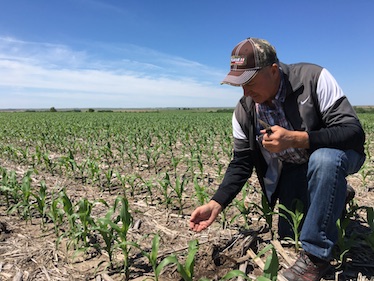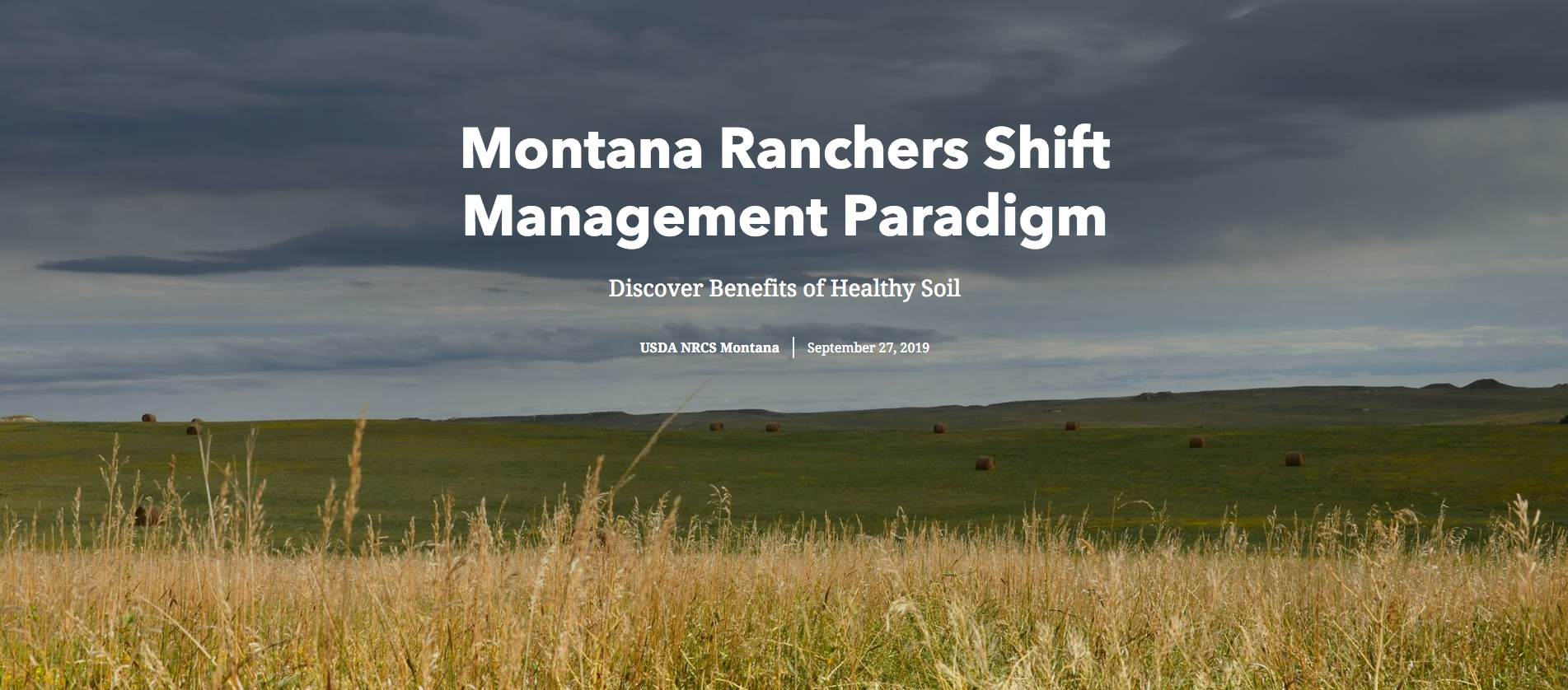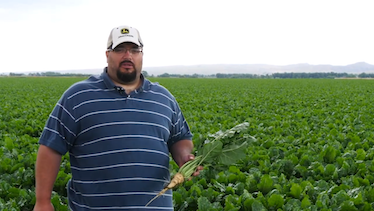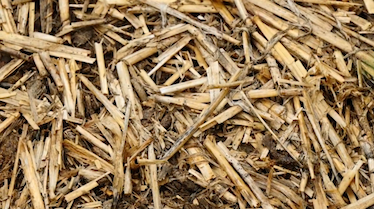No-till is not a new concept — it has been a management practice for several decades. Yet it has gained fresh momentum as a key soil health practice recommended by the USDA NRCS. Adopting a new management practice is no small decision though. It is essential to learn as much as possible from scientists and fellow farmers about the pros and cons of alternative tillage options before deciding which one you might adopt to achieve your management or business goals.
The USDA Northern Plains Climate Hub has compiled a short list of resources about no-till and other reduced-tillage options to help inform your tillage management decisions. Some of the research highlighted below shows that no-till makes it easier to manage soil moisture — when there is either too little or too much. No-till has also been shown to help farms better 'weather' both droughts and heavy precipitation events. Research also shows that converting a conventionally tilled field to no-till can eventually increase profits.
Perhaps more important, are the stories we share from farmers in the Northern Plains who have already adopted no-till, such as in Nebraska and south central Montana. These farmers share why they changed their tillage practices, and offer words of advice for fellow farmers who are considering changing their practices too.
We hope you will explore the resources provided below — the quick-and-easy bullet points and the links to more information. Consider sharing your no-till journey — your questions, challenges, successes, lessons learned, and words of advice — with us via Twitter (@USDAClimateHubs). Help your fellow farmers learn from you!
How can no-till help protect your soil, conserve soil moisture, and increase profitability? USDA ARS researchers dig into no-till.
Combining No-Till and the Right Rotations Stores More Precious Precipitation
Key Points:
- A USDA Agricultural Research Service project at the Central Great Plains Research Station near Akron, Colorado.
- A long-term study of alternative tillage practices and crop rotations for dryland wheat production to improve soil water storage and reduce the need to fallow.
- Fallow, using conventional tillage, causes a decline in soil organic matter, leaves soil susceptible to wind erosion, and loses 65% to 80% of precipitation to evaporation.
- Four to six tillage passages to kill weeds during a 14-month fallow results in a loss of 3 acre-inches of water.
- By combining no-till with no-fallow, farmers can capture more of the precious rain or snowmelt that falls throughout the year.
- Scientists have shown that using no-till practices in a conventional wheat-fallow rotation can increase net farm income.
- One of the most profitable rotations, no-till wheat-millet, was shown to increase farm net-income compared to no-till wheat-fallow.
- No-till’s ability to store precipitation in soil can be improved further by using a stripper header to leave even more residue on the soil surface. The stripper header removes just the head of grain, leaving the rest of the plant standing to enhance precipitation storage and erosion protection.
- To learn about the fuel savings possible by adopting no-till, check out this USDA Natural Resources Conservation Service blog, “Saving Money, Time and Soil: The Economics of No-Till Farming”:
- “Assume an average off-road diesel fuel price of $2.05 per gallon. If a farmer with 1,000 acres of crops switches from continuous conventional till to continuous no-till, they could save 4,160 gallons of diesel fuel – more than $8,500 worth – each year.”
- “For 1,000 acres, a farmer who plows 15 acres per hour would save roughly 67 hours of work with each pass eliminated by adopting no-till. Depending on labor costs and equipment maintenance, that’s an additional several thousand dollars saved each year."
Watch this video with farmer Marlin Murdoch of Orleans, Nebraska, to learn about the benefits of no-till for soil health, weather-ready farming, and cost-savings.
Key Points:

-
Nebraska farmer Marlin Murdoch began using no-till in the 1980s.
-
He describes how no-till has helped him build organic matter and strengthen the farm's weather resilience while reducing labor and equipment costs in an irrigated system.
-
Marlin says that no-till offers advantages by conserving soil moisture in dry growing seasons and preventing his crop from being washed out during very wet growing seasons.
This video is part of a larger project Learning From Your Neighbor: Climate Resiliency in Agriculture — a partnership among the University of Wyoming Extension, University of Nebraska Extension, Montana State University Extension, South Dakota State University Extension, North Dakota State University Extension, and Colorado State University Extension, with funding in part from the USDA Northern Plains Climate Hub.
Click here to watch additional project videos and stay tuned for more videos!
To see how farmers and ranchers in eastern Montana are using no-till and other conservation practices to protect soils and improve their bottom-line, visit this engaging website from the USDA NRCS.

Watch this video with farmer Greg Schelemmer of Belfry, Montana, to learn how another producer in the Northern Plains successfully implemented no-till.
Key Points:

-
Greg Schelemmer explains how he came to use no-till in his corn, sugar beet, and barley rotation system in Belfry, Montana.
-
Greg describes the soil health benefits and cost-savings he has observed since starting no-till several years ago.
-
He suggests that farmers interested in starting no-till begin by trying on a smaller scale first, to learn how the system works on their farm's unique ground.
Using furrow irrigation? Interested in no-till but concerned about residue management?
Furrow irrigation technical bulletin: Wardle, Bauder and Pearson (2015). Guidelines for using conservation tillage under furrow irrigation. TR15-10 Colorado State University Agricultural Experiment Station. Second Edition.
Key Points:

-
This bulletin provides a detailed “how-to” manual for producers, consultants, and other technical transfer partners interested in using conservation tillage practices under furrow irrigation to decrease costs, increase soil organic matter, and reduce runoff and erosion.
-
In furrow irrigated systems, residue management is an important consideration for conservation tillage. Options for residue management include: crop rotations, bailing/removal, grazing, and spreading residue evenly.
-
The bulletin discusses costs and returns, equipment needs, weed management, strip till, and irrigation tips.
Additional Resources about No-Till
Neil C. Hansen, Brett L. Allen, R. Louis Baumhardt, Drew J. Lyon. 2012. Research achievements and adoption of no-till, dryland cropping in the semi-arid U.S. Great Plains, Field Crops Research, 132, 196-203.
Fred Magdoff and Harold Van Es. 2009. Building Soils for Better Crops Sustainable Soil Management, Third Edition, Published by the Sustainable Agriculture Research and Education (SARE) Program.

